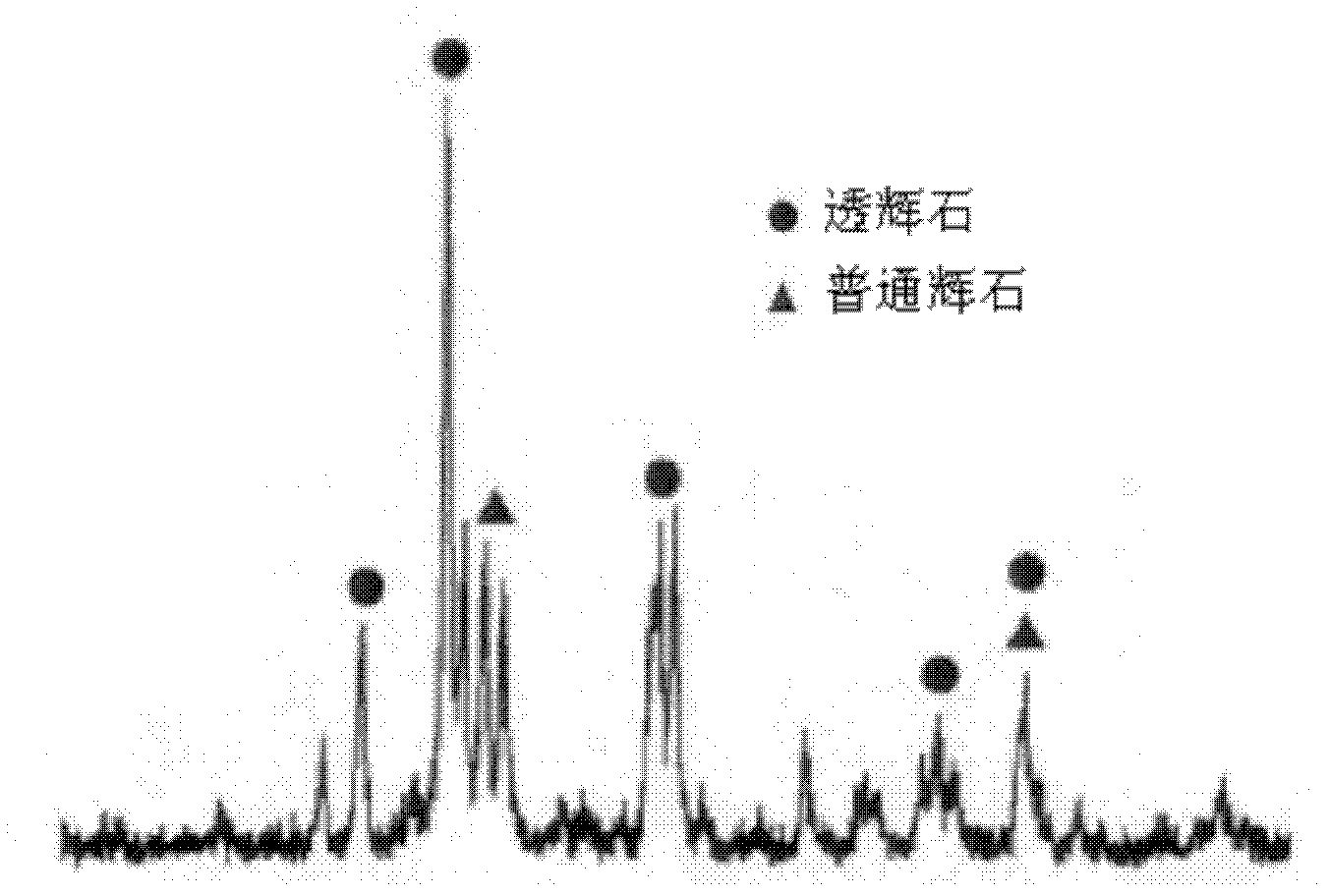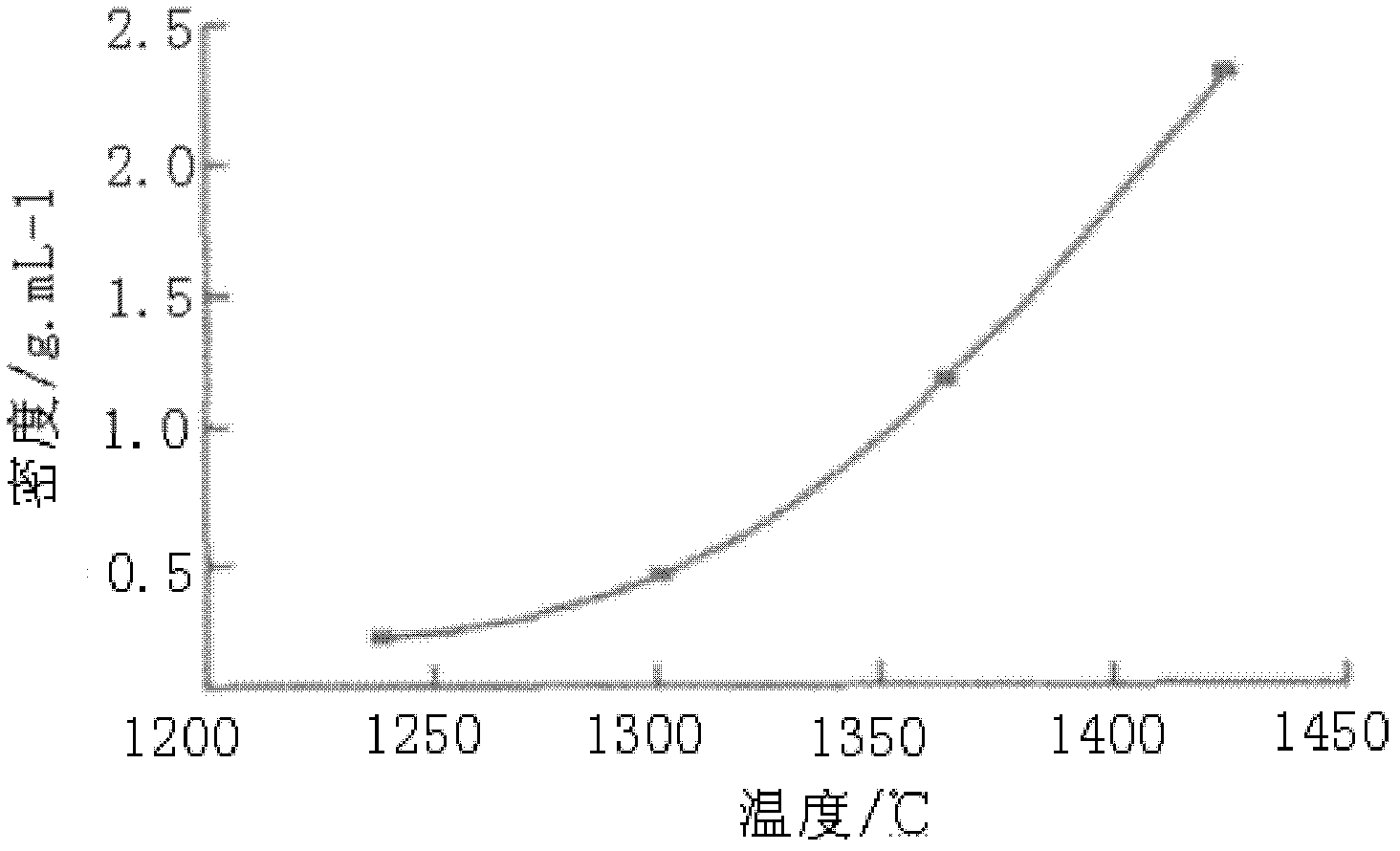Wear-resistant crystallized glass plate and preparation method thereof
A technology of glass-ceramics and plates, which is applied in the field of industrial wear-resistant plates, can solve the problems of insignificant production costs, poor product color and aesthetics, and failure to be successfully promoted, and achieves solutions to poor color and aesthetics, The surface is soft and crystal clear, and the effect of reducing production costs
- Summary
- Abstract
- Description
- Claims
- Application Information
AI Technical Summary
Problems solved by technology
Method used
Image
Examples
Embodiment 1
[0033] process such as figure 1 As shown, the specific steps are:
[0034] Crushing and screening steel slag and quartz sand;
[0035] The raw material components are weighed and mixed according to the proportion by weight; specifically: 65 parts of iron and steel slag, 20 parts of quartz sand, 6 parts of magnesium oxide, 5 parts of titanium dioxide, and 1 part of calcium fluoride.
[0036] The composition and weight percent content of the iron and steel slag are: SiO 2 15%, FeO 15%, CaO 50%, MgO5%, Al 2 o 3 2%, TFe 10%, MnO 2%, P 2 o 3 0.5%, MFe 0.5%.
[0037] Place the above raw material components in a crucible kiln and melt at 1380°C for 3 hours; after the melting is completed, pour the molten glass directly into water and quench it into glass pellets (the viscosity of the molten glass is 10Pa.s, the nucleation temperature is 735°C, and the nucleation time 1h); spread the glass granules in a refractory abrasive tool and carry out crystallization in a shuttle kiln...
Embodiment 2
[0039] process such as figure 1 As shown, the specific steps are:
[0040] Crushing and screening steel slag and quartz sand;
[0041] The raw material components are weighed and mixed according to the proportion by weight; specifically: 85 parts of iron and steel slag, 30 parts of quartz sand, 10 parts of magnesium oxide, 10 parts of titanium dioxide, and 3 parts of calcium fluoride.
[0042] The composition and weight percent content of the iron and steel slag are: SiO 2 20%, FeO 10%, CaO 40%, MgO5%, Al 2 o 3 5%, TFe 15%, MnO 4%, P 2 o 3 0.1%, MFe 0.9%.
[0043] Place the above raw material components in a crucible kiln and melt at 1450°C for 1 hour; after the melting is completed, pour the molten glass directly into water and quench it into glass pellets (the viscosity of the molten glass is 12Pa.s, the nucleation temperature is 710°C, and the nucleation time 2h); spread the glass granules in a refractory abrasive tool for crystallization in a box-type electric fu...
Embodiment 3
[0045] process such as figure 1 As shown, the specific steps are:
[0046] Crushing and screening steel slag and quartz sand;
[0047] The raw material components are weighed and mixed according to the proportion by weight; specifically: 70 parts of iron and steel slag, 25 parts of quartz sand, 8 parts of magnesium oxide, 7.5 parts of titanium dioxide, and 2 parts of calcium fluoride.
[0048] The composition and weight percent content of the iron and steel slag are: SiO 2 15%, FeO 10%, CaO 40%, MgO 10%, Al 2 o 32%, TFe 20%, MnO 2%, P 2 o 3 0.3%, MFe 0.7%.
[0049] Place the above raw material components in a crucible kiln and melt at 1400°C for 2.2 hours; after the melting is completed, pour the molten glass directly into water and quench it into glass pellets (the viscosity of the molten glass is 11.5Pa.s, and the nucleation temperature is 715°C, forming The nuclear time is 1.2h); the glass granules are spread flat in the refractory abrasive tool and crystallized in...
PUM
| Property | Measurement | Unit |
|---|---|---|
| gloss | aaaaa | aaaaa |
| bending strength | aaaaa | aaaaa |
| density | aaaaa | aaaaa |
Abstract
Description
Claims
Application Information
 Login to View More
Login to View More - R&D
- Intellectual Property
- Life Sciences
- Materials
- Tech Scout
- Unparalleled Data Quality
- Higher Quality Content
- 60% Fewer Hallucinations
Browse by: Latest US Patents, China's latest patents, Technical Efficacy Thesaurus, Application Domain, Technology Topic, Popular Technical Reports.
© 2025 PatSnap. All rights reserved.Legal|Privacy policy|Modern Slavery Act Transparency Statement|Sitemap|About US| Contact US: help@patsnap.com



